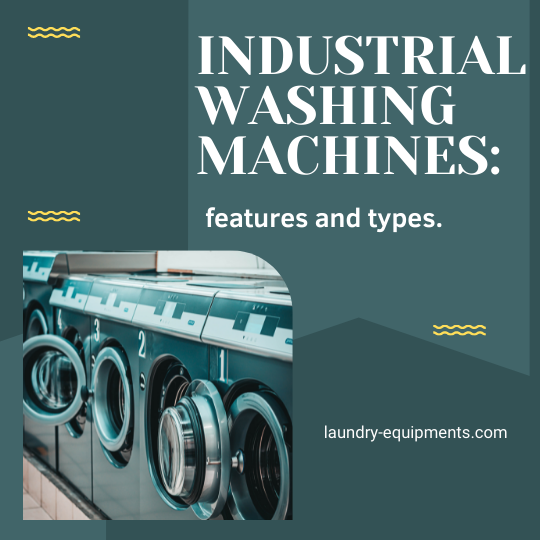Industrial washing machines: features and types.
Industrial washing machines differ from household ones not only in price. They have a number of their own characteristics and division into specific types. There are also special selection criteria, without which it is impossible to buy good equipment.

Features
Industrial washing machines are produced by a variety of manufacturers. But for a good selection, you should first omit the main features of specific firms, paying attention to the general specifics. The most important feature that distinguishes industrial machinery is the increased load of dry laundry. It is extremely rare to find a home model that would hold more than 10 kg. Capacity above 15 kg and does not occur at all.
But in the industrial segment, models that allow you to wash 25-100 or more kg of laundry at the same time are not uncommon . This is completely unjustified in domestic use, even in a large family, but in a hotel, hostel and similar places it is quite rational. An equally important difference is the washing cycle device. Industrial-grade machines usually use programmers that allow you to set up to 200 different programs. For comparison: in the household, models designed for 20-30 different modes belong to the premium class.
The washing time for cotton clothes with a full load is limited to 40-60 minutes. In home cars, it will take a minimum of 2 hours. The reason is quite clear: professional laundries have a strict rhythm and work schedule that should not be violated. There is a difference in the level of reliability, and in the permissible intensity of operation.
If you comply with this condition, the household appliance can be used for 7 to 10 years . Then comes the irreversible deterioration of the basic qualities. In this regard, professional equipment is an order of magnitude better. She will be able to work stably for 20 hours every day, while making up to 30 thousand washing cycles per year. And if proper maintenance is still organized, then professional devices will last stably for at least 25 years.
If you try to use an ordinary household laundry machine, no manufacturer will support a guarantee for it. Not to mention the fact that the equipment will fail long before the normal deadline. Another nuance is that models for laundries and dry cleaners work almost autonomously. They are equipped with such advanced processors that the intervention of personnel is extremely rare.
Varieties
The classification of industrial washing machines can be very different.
By type of spin
Laundry machines are divided into 2 main groups - with high and low speeds. The first category includes equipment that can develop no more than 1000 revolutions per minute. With such an extraction, no more than 50% of the original moisture remains in the laundry. The motor of high-speed wringers is almost silent. This is achieved by installing a special frame, supplemented with shock absorbers.
All that is required for such equipment is a flat surface that is resistant to moisture. Low speed models can spin laundry at a maximum speed of 800 rpm. As a result, the moisture content of the fabric will be up to 80%. The installation of "slow" machines for washing overalls and other products is complicated by the rigid attachment of the drum to the machine. When the spin starts, there will be a strong vibration, and only a reliable foundation can compensate for it.
The height of the base can be at least 30 cm. With a smaller support layer, the protection is completely unreliable. Most often, low-speed machines are made of stainless steel grades. Such equipment is widely used in river and sea transport, since pitching greatly harms high-speed units. The drum can be positioned both vertically and horizontally.
By type of management
There are two different versions - automatically controlled and with a programmer. Fully automatic models work (from the operator's point of view) in exactly the same way as home appliances. When managing programs, you can set the water temperature, spin speed and other necessary parameters. As for the programmable versions, they are equipped with a microprocessor panel, which deserves the name of a multifunctional computer.
For water heating
Like household, industrial washing machines can be equipped with heating elements. Such models are more expensive than others, but they are widely in demand. Sometimes steam and gas heating is used. It can be combined with electric water heating. The problem is that it is impossible to use steam and gas methods without connecting to a separate boiler room.
By download volume
It should be borne in mind that some of the professional washing machines supplied even by large companies deserve such a name only conditionally. These are the models designed for 12 kg. They are more suitable for miniature laundries, mini-hotels, small kindergartens, and clinics. In full-fledged hotels, fitness clubs, hospitals and hospitals, the use of equipment for 25 kg is recommended.
Some experts believe that for a large laundry or a federal-level hotel, it is worth using washing machines with a capacity of 30 kg. They will be able to wash up to 250 kg of laundry per standard work shift. The choice of 30 kg devices is quite wide, and you can choose the best product for yourself. As for the 50 kg versions, this technique is suitable for:
- Big hotels;
- Sanatoriums;
- Houses and recreation centers;
- Sports and dance schools;
- Various sports clubs;
- Industrial enterprises.


